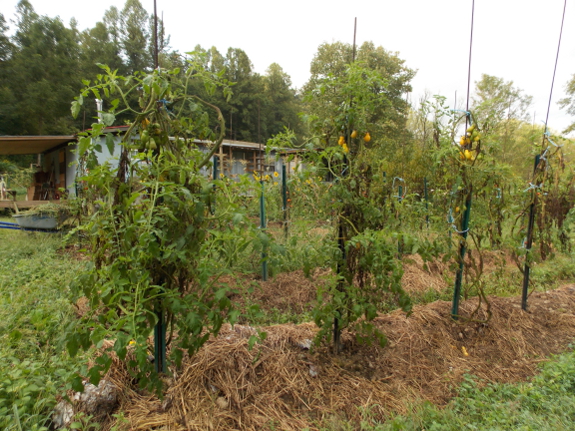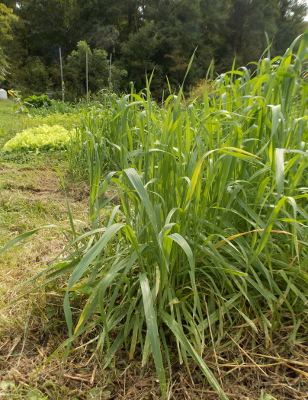
A busy time for cover crops

The first half of
September is a surprisingly busy time in our garden. Why the
surprise? Because most people are letting their summer vegetables
drift into weeds at this time of year...but I'm opening up areas as fast
as I can to plant oilseed radishes and oats as cover crops.
My method means that our farm's soil gets richer every year while weed
pressure gets lower and lower...but it does keep me hopping.
 If
I didn't have an oat deadline to consider (September 15), then I'd let
beds of dwindling summer squash, cucumbers, bush beans, and mung beans
sit around and dribble in a bit more food. Instead, I rip them out
and plant cover crops. Similarly, I look at larger plants with a
stern eye --- will I lose much by raking back the mulch around declining
tomatoes and sowing oats to hold the soil over the winter?
Probably not, so oats it is!
If
I didn't have an oat deadline to consider (September 15), then I'd let
beds of dwindling summer squash, cucumbers, bush beans, and mung beans
sit around and dribble in a bit more food. Instead, I rip them out
and plant cover crops. Similarly, I look at larger plants with a
stern eye --- will I lose much by raking back the mulch around declining
tomatoes and sowing oats to hold the soil over the winter?
Probably not, so oats it is!
I've read that some
old-timey farmers used to plant oats around their strawberry plants at
this time of year, growing mulch in place for the spring. I've
always been afraid of losing productivity in my favorite fruit, but I
opted to experiment with half of one bed this fall. Similarly, I
sowed oats beyond the canopy spread in our blueberry rows, hoping for a
bit of extra organic matter with little effort on my part.
Do I get to rest on my
laurels once the cover-crop deadline is past? Nope --- then it
will be time to weed the fall seedlings and plant a bunch of beds of
garlic. But I can definitely feel the garden locomotive slowing
down as it prepares to pull into the station and rest for the winter.
Want more in-depth information? Browse through our books.
Or explore more posts by date or by subject.
About us: Anna Hess and Mark Hamilton spent over a decade living self-sufficiently in the mountains of Virginia before moving north to start over from scratch in the foothills of Ohio. They've experimented with permaculture, no-till gardening, trailersteading, home-based microbusinesses and much more, writing about their adventures in both blogs and books.
Want to be notified when new comments are posted on this page? Click on the RSS button after you add a comment to subscribe to the comment feed, or simply check the box beside "email replies to me" while writing your comment.
- Remove comment
- Remove comment
